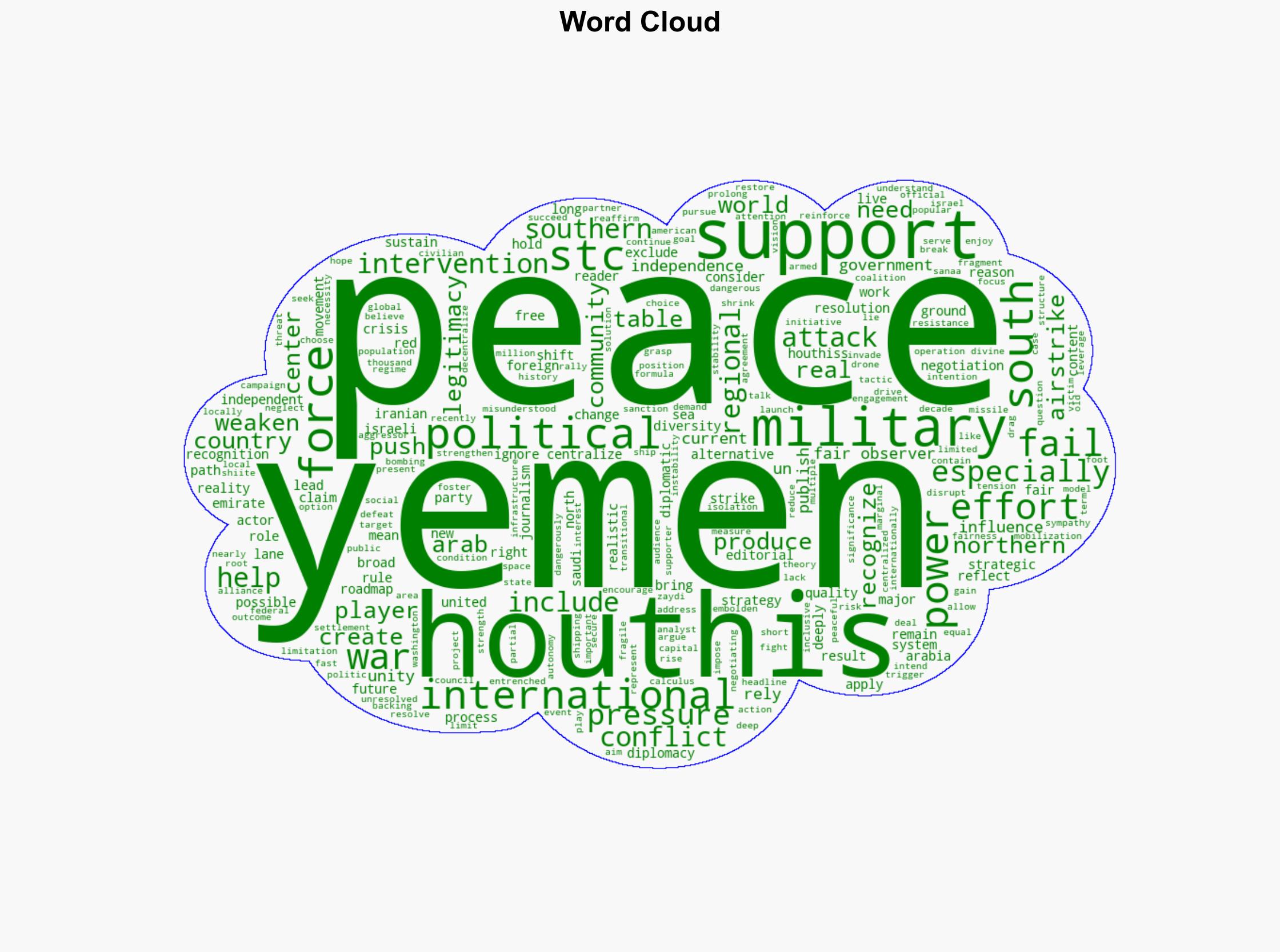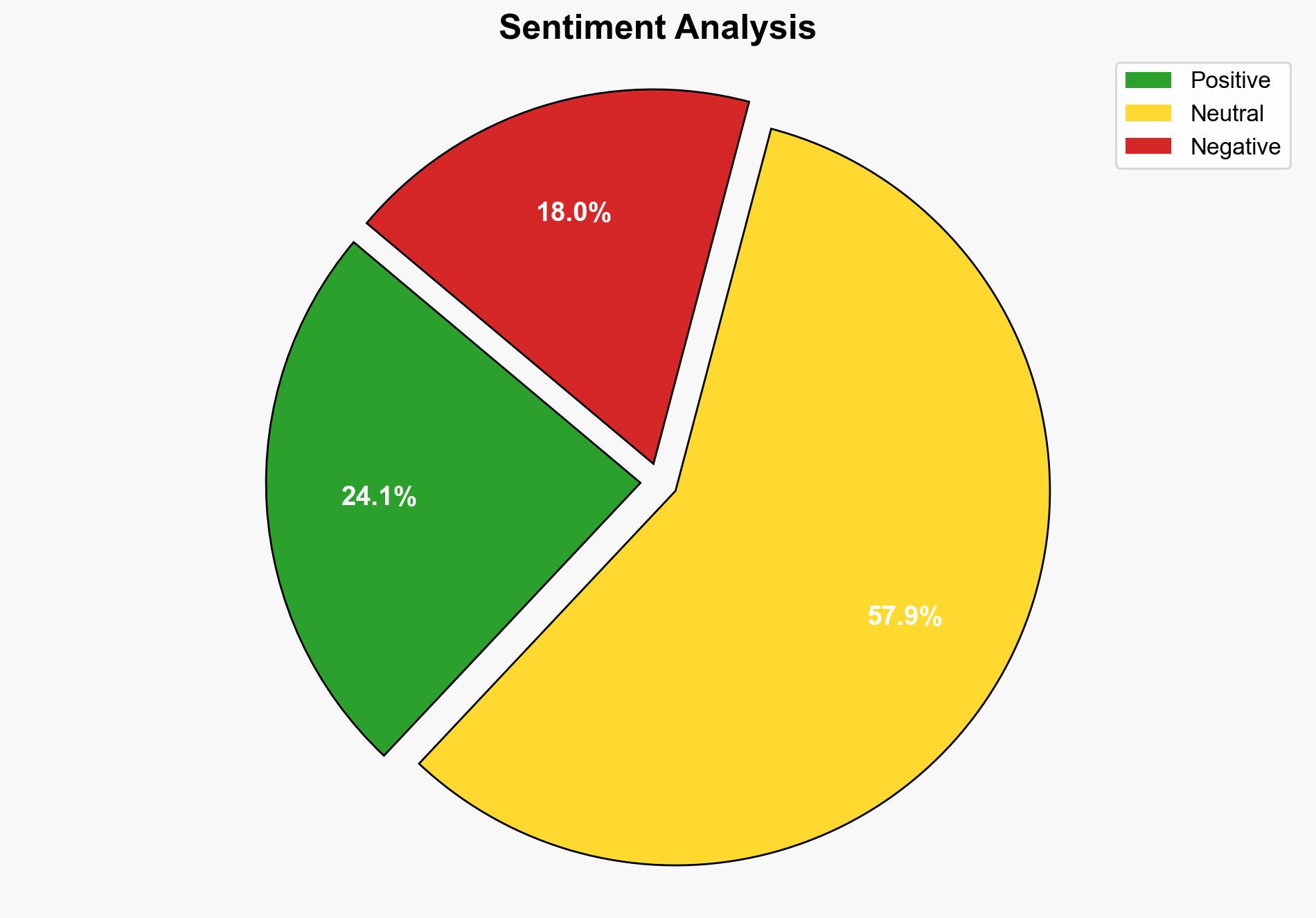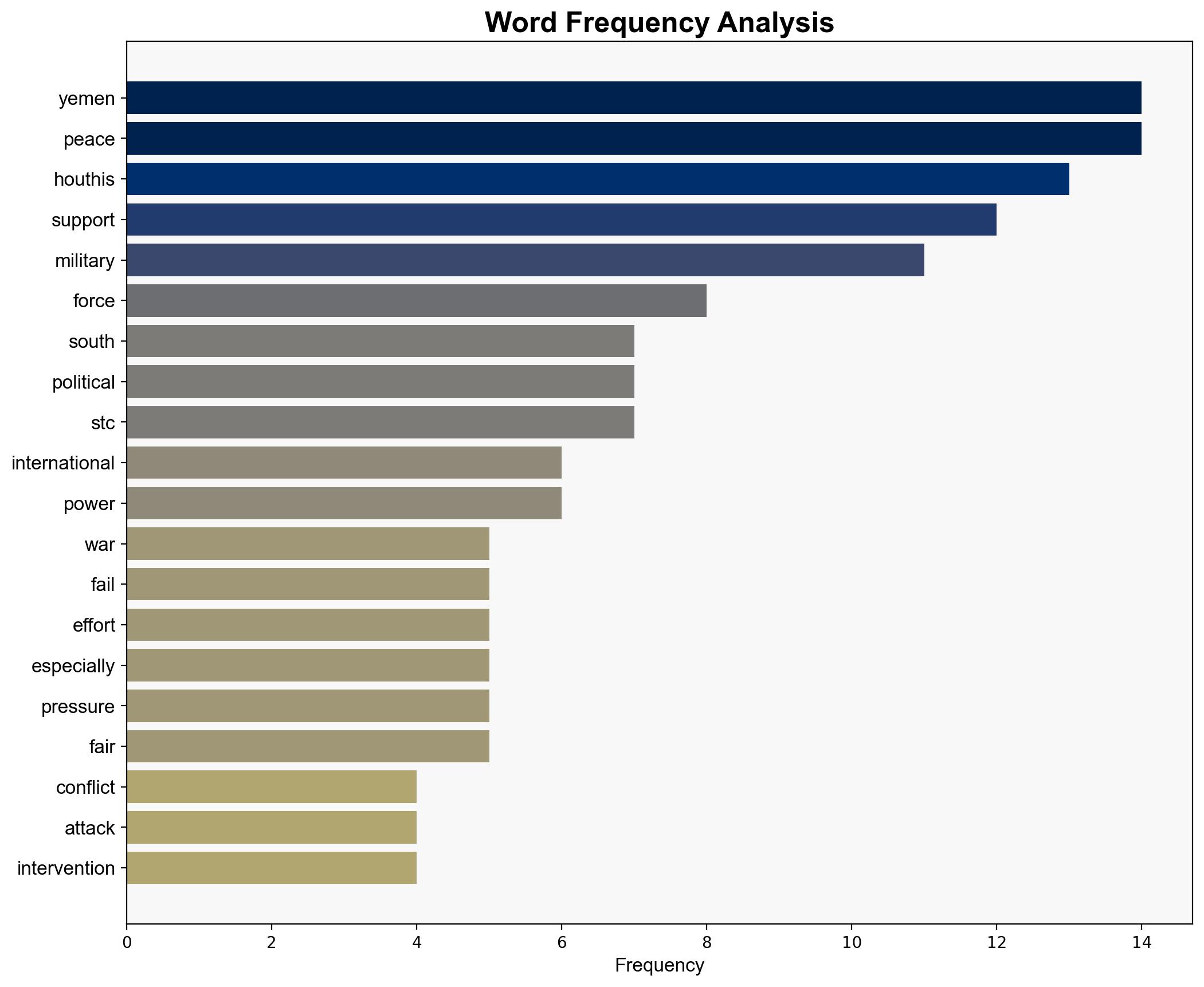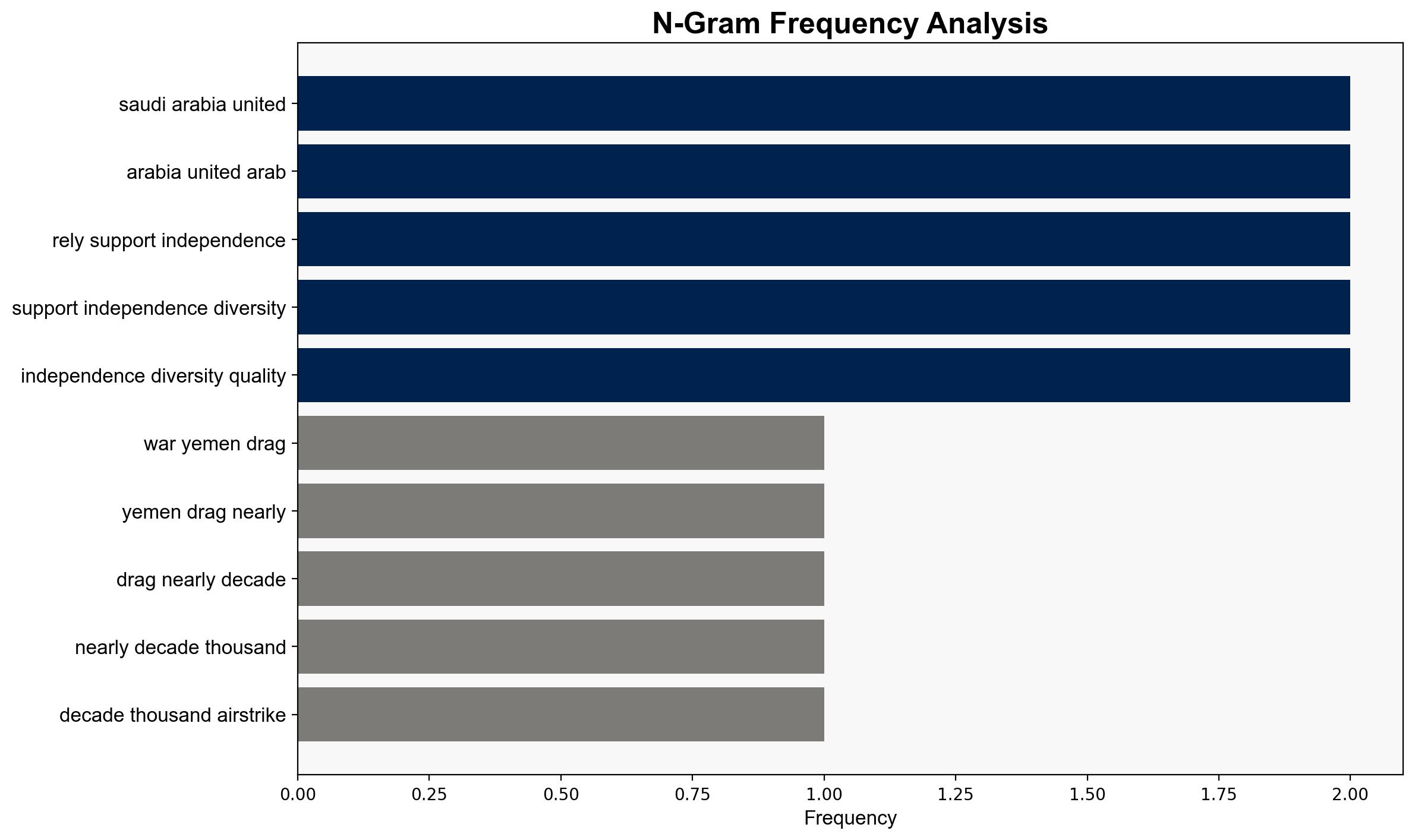Yemens Crisis Demands a Rethink of Strategy Not More Airstrikes – Fair Observer
Published on: 2025-08-17
Intelligence Report: Yemen’s Crisis Demands a Rethink of Strategy Not More Airstrikes – Fair Observer
1. BLUF (Bottom Line Up Front)
The most supported hypothesis is that a shift from military intervention to a political engagement strategy is necessary to resolve the Yemen crisis. This conclusion is drawn with a moderate confidence level, given the complexity of the conflict and the entrenched positions of involved parties. It is recommended that international actors prioritize diplomatic efforts and consider a decentralized federal system for Yemen as a potential solution.
2. Competing Hypotheses
1. **Hypothesis A**: Continued military intervention, including airstrikes, will weaken the Houthis and lead to a resolution of the conflict. This hypothesis assumes that military pressure can force the Houthis to negotiate or collapse.
2. **Hypothesis B**: Military intervention has failed and will continue to fail in resolving the Yemen crisis. A political solution, involving a decentralized federal system, is necessary to address the underlying causes of the conflict and achieve lasting peace.
Using the Analysis of Competing Hypotheses (ACH) 2.0, Hypothesis B is better supported due to the persistent failure of military strategies to produce desired outcomes and the strengthening of the Houthis’ position despite ongoing military efforts.
3. Key Assumptions and Red Flags
– **Assumptions**:
– Hypothesis A assumes that military pressure can effectively weaken the Houthis.
– Hypothesis B assumes that political engagement and decentralization can address the root causes of the conflict.
– **Red Flags**:
– The potential for cognitive bias in underestimating the Houthis’ resilience and local support.
– Lack of comprehensive data on the internal dynamics of the Houthis and other regional actors.
4. Implications and Strategic Risks
– **Patterns**: Continued military intervention may exacerbate humanitarian crises and strengthen anti-foreign sentiment.
– **Cascading Threats**: Prolonged conflict could destabilize neighboring regions and disrupt global shipping lanes.
– **Potential Escalation**: Increased military actions could provoke retaliatory attacks, further entrenching the conflict.
– **Geopolitical Dimensions**: The involvement of regional powers like Iran complicates the conflict and impacts broader Middle Eastern stability.
5. Recommendations and Outlook
- Shift focus from military solutions to diplomatic engagement with all Yemeni factions, including the Houthis and the Southern Transitional Council (STC).
- Encourage international mediation to develop a decentralized federal system as a potential framework for peace.
- Scenario Projections:
– **Best Case**: Successful negotiation leads to a ceasefire and the establishment of a federal system.
– **Worst Case**: Escalation of military actions leads to regional destabilization.
– **Most Likely**: Continued stalemate with sporadic violence and humanitarian crises.
6. Key Individuals and Entities
– Houthis
– Southern Transitional Council (STC)
– Iranian regime
7. Thematic Tags
national security threats, geopolitical strategy, conflict resolution, Middle East stability





